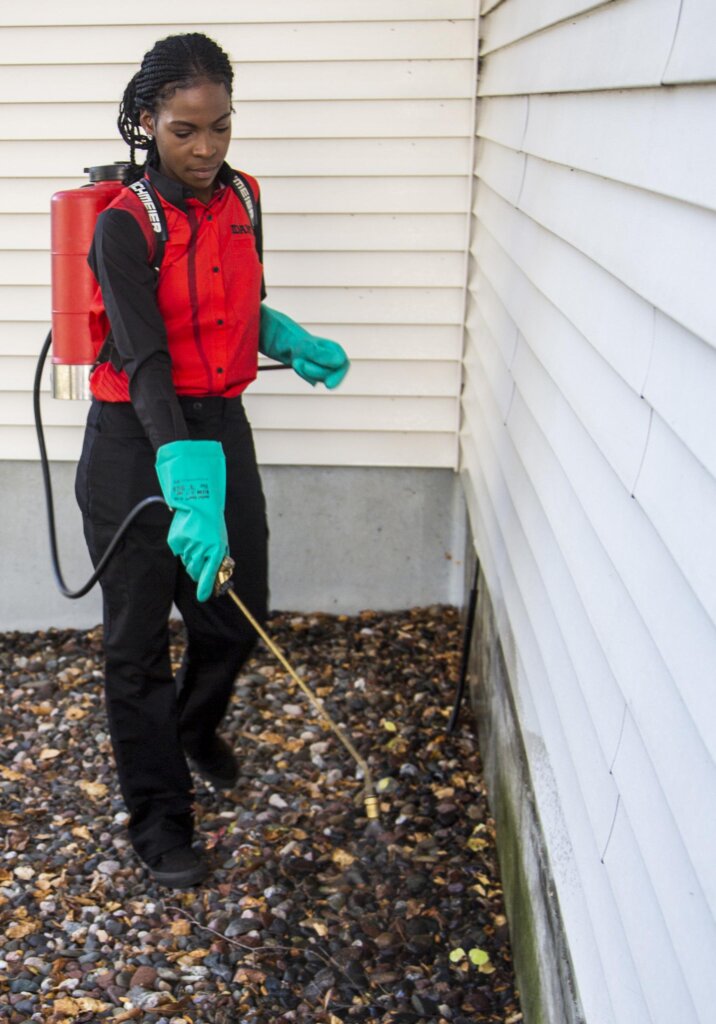Bed Bug Therapy Malfunction: Contrasting Chemical Vs. Non-Chemical Solutions
In the world of bug control, especially when dealing with the consistent concern of bed insects, the selection between chemical and non-chemical therapy remedies can be a pivotal one. Both techniques supply distinct benefits and downsides, influencing variables such as effectiveness, security factors to consider, and general price. By taking a look at the nuanced information of each method, a clearer understanding of which path to pursue in dealing with a bed bug invasion can be acquired.
Performance of Chemical Treatments
Chemical therapies for bed pest infestations have actually been widely identified for their potent and fast efficiency in removing these insects. When taking into consideration the effectiveness of chemical treatments, it is essential to understand that they can provide a detailed and fast service to a bed bug problem. Professional pest control experts frequently count on pesticides to target bed pests at various stages of their life cycle, including eggs, grownups, and fairies. These chemicals normally function by disrupting the bed pests' nerves, resulting in paralysis and eventual death.
Furthermore, chemical therapies have the benefit of using residual impacts, indicating that they can proceed to remove bed insects even after the initial application. This residual activity is especially beneficial in combating any kind of possible re-infestations. In addition, the rapid action of chemical therapies can bring alleviation to individuals facing severe bed pest infestations, allowing them to reclaim control of their space rapidly.
Security Concerns With Chemical Solutions
One vital aspect that calls for mindful factor to consider when making use of chemical remedies for bed pest therapy is ensuring the security of passengers and the setting. Exposure to specific chemicals made use of in bed bug therapies can lead to breathing problems, skin irritation, or other negative reactions, especially in people with pre-existing problems or sensitivities.
Additionally, the environmental effect of chemical services is one more significant factor to consider. Some chemicals made use of in bed insect treatments might be hazardous to beneficial insects, wild animals, and communities if they leach right into the soil or water systems. It is necessary to make use of chemical treatments carefully, adhering to security guidelines, and considering much less poisonous choices to alleviate these risks and make certain the risk-free and efficient management of bed pest infestations.
Advantages of Non-Chemical Techniques
Considering the possible safety issues and environmental impact linked with chemical solutions for bed insect therapy, checking out non-chemical strategies provides an encouraging choice with numerous distinctive advantages. Non-chemical therapies are ecologically pleasant, as they do not add to air or water air pollution, making them a lasting option for insect control.
In addition, non-chemical services can be effective in targeting bed pests, consisting of hard-to-reach areas where chemical treatments might not penetrate - A1 charlotte pest control companies. Methods such as heat therapy, vacuuming, steam cleansing, and cushion encasements offer extensive obliteration without the usage of hazardous chemicals.
Limitations of Non-Chemical Treatments

Furthermore, non-chemical treatments often require several applications to achieve effective obliteration. This can be taxing and may not always ensure complete removal of all bed insects and their eggs, particularly in concealed or hard-to-reach places.
Additionally, the success of non-chemical therapies heavily relies upon appropriate implementation and thoroughness, which can be challenging for people without expert proficiency. Poor application of non-chemical techniques may lead to incomplete obliteration, bring about consistent infestations and the demand for added therapies.
Consequently, while non-chemical treatments have their advantages, it is crucial to acknowledge these restrictions and consider them when figuring out the most efficient approach for handling bed pest invasions.
Cost Comparison: Chemical Vs. Non-Chemical Options
Offered the restrictions connected with non-chemical treatments, a vital element to evaluate in the context of bed insect management is the cost comparison between chemical and non-chemical options. In contrast, non-chemical treatments like warmth treatment or steam can be more pricey, with prices varying from $1,000 to $6,000 for an entire home. While the initial price of chemical treatments might seem reduced, several treatments might be needed to completely remove the infestation, possibly raising the general cost.
Verdict

Considering the possible safety problems and environmental impact connected with chemical remedies for bed insect therapy, checking out non-chemical techniques presents an encouraging option with numerous unique advantages.Provided the constraints connected with non-chemical therapies, an important aspect to evaluate in the context of bed insect management is the expense contrast between chemical and non-chemical alternatives. In contrast, non-chemical therapies like warm therapy or steam can be a lot more pricey, with costs ranging from $1,000 to $6,000 for an entire home. While the first expense of chemical treatments may seem reduced, multiple treatments might be needed to fully remove the infestation, potentially raising the overall expense.In verdict, when contrasting chemical and non-chemical bed pest treatment alternatives, it is necessary to consider efficiency, safety and security, benefits, constraints, and cost.